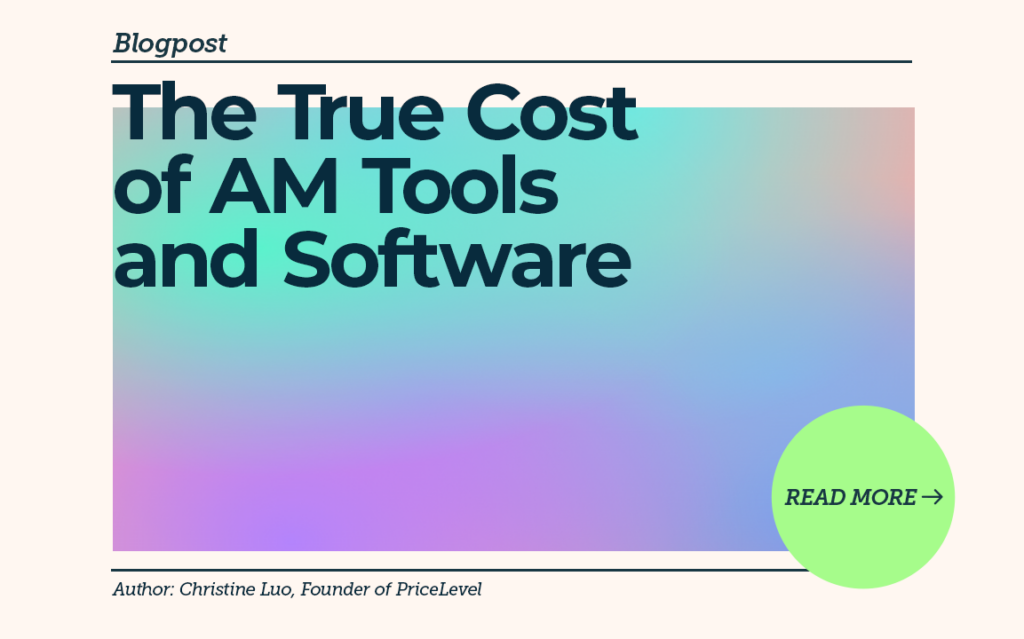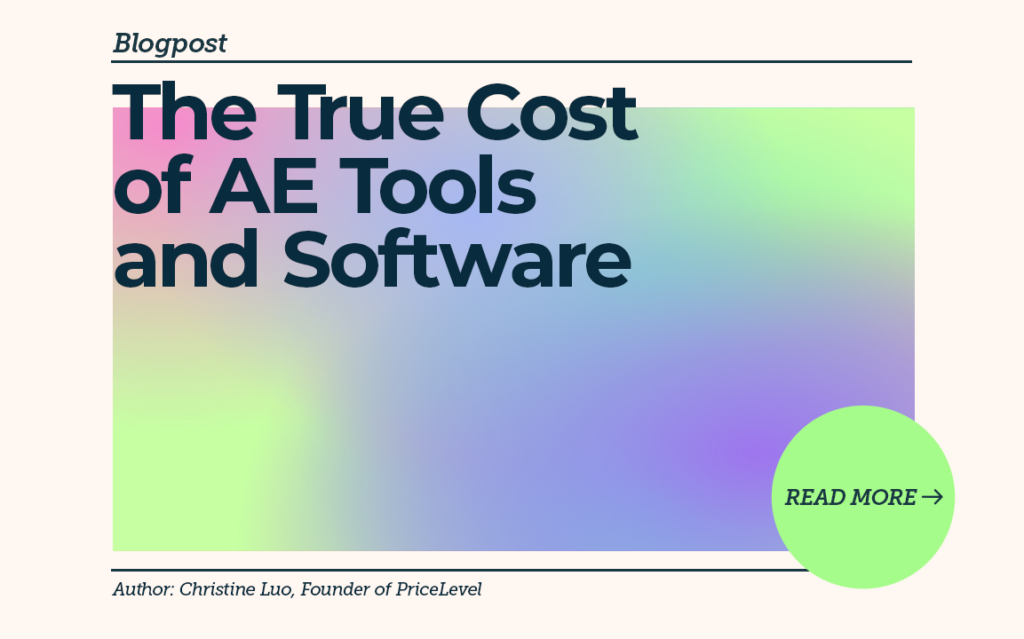The True Cost of AM Tools and Software

Author: Christine Luo, Founder of PriceLevel
Welcome back to the series, where we explore the actual cost of a deal by examining the tools and software costs associated with each role in the sales process. Predictable Revenue and PriceLevel have partnered to provide pricing transparency and a deeper understanding of the cost structures in the sales tech stack.
So far, we’ve decoded the true cost of SDRs and AEs. In this edition, we’ll dive into Account Managers, better known as AMs.
Account Managers are the main point of contact between a company and its customers. They focus on nurturing the relationship with existing customers through consistent communication, performance insights, and liaising with the company’s internal teams. AM’s contribute to a company’s bottom line by upselling or cross-selling additional products, and ensuring customers continue renewing.
This multifaceted role uses various tools to maintain an open line of communication with clients and translate their needs to the internal team. To highlight the true cost of the AM tech stack, we’ve created fictional case studies using a 10-person sales team and a 100-person sales team.
Role and responsibilities of an AM
Account Managers lead business-critical renewal and upselling initiatives within companies. This role requires strong project management and stakeholder management skills to ensure their customers’ problems are solved no matter which and how many internal teams the AM has to work with.
Their ultimate goal is to ensure customers are satisfied with the company and will either expand their product adoption or renew their contract, ideally both.

To achieve this goal, an AM organizes their day around their book of business, aka the customers for whom they are responsible. AMs may spend any hour checking in with customers to discuss existing performance, gather product feedback, or address concerns; working with internal teams to ensure new products or bug fixes are on time; or identifying opportunities for upselling and cross-selling additional products to their customers.
AM’s are typically goaled using metrics that align with maintaining and growing customer satisfaction which also help companies grow their bottom line. Examples include, but are not limited to:
- Percentage of customers who renew or are retained
- New business won from existing customers
- Dollar growth within a customer
- Customer Satisfaction (CSAT) or Net Promoter Score (NPS)
Like AEs, account managers have a mix of base salary and variable compensation, although the percentage mix might differ. The variable compensation is often tied to account growth (upselling, cross-selling, renewing) and can be paid out as a commission or bonus. Having a guaranteed base salary provides financial stability and compensates AM’s for the work they’re already putting in.
Having variable compensation means AMs are highly incentivized to achieve their performance targets, and a company needs to make sure it provides the right tools and software for their AMs to meet and exceed expectations.
The AM tech stack
To upsell and cross-sell products efficiently and effectively, AMs rely on various tools to streamline performance reporting, maximize relationships, and automate busy work. A typical AM tech stack includes:
- Customer relationship management (CRM) software – a versatile tool that AM’s also heavily rely on. Salesforce Sales Cloud is the go-to tool to manage existing customer data, schedule follow-up activities, and collaborate internally with the wider sales team. We’ve discussed CRM pricing before in our SDR and AE editions.
- Salesforce Workflow Automation tools – for companies utilizing Salesforce, there’s a wide variety of add-on tools that will help automate workflows like distributing leads, answering emails within Salesforce, etc. Formstack is one example that lets you build custom forms using Salesforce fields so the AM team doesn’t have to spend time transposing data.
- Calendar Scheduling software – Calendly and Chili Piper are two examples of software that makes it easy for customers to schedule time with their Account Managers.
- Subscription Management platforms – in order to maximize growth in a customer’s existing subscription, platforms like ChartMogul or Maxio allow AM’s to dive deep into their book of business and craft custom contract terms.
- Performance Tracking tools – software like Looker and Metabase give AM’s a self-service platform to create performance reports and highlight the value that customers are receiving in a data-driven format.
- Gifting platforms – for those moments of delight, gifting platforms like Sendoso let AMs show how much they appreciate their clients.
Depending on the team size and usage level, this tech stack can vary wildly in cost. Unfortunately, it’s difficult to find public pricing for many of these tools to understand the true cost, but fortunately, PriceLevel has pricing comps and negotiated discounts that other buyers have actually gotten for their AM tech stack.
Decoding the cost of AM tools and software
We’ll use fictional case studies for a 10-person sales team and a 100-person sales team to understand the true cost of the AM tech stack. First, let’s set the baseline cost for these AM tools:

*Prices actual buyers pay for these vendors. The cost is for an annual subscription. Source: PriceLevel.
The true cost of the AM tech stack: 10-person sales team
Growing sales teams often utilize vendors specializing in smaller businesses or lower tiers of the same vendors as enterprise sales teams. This allows companies to grow into more expensive tiers. To build this fictional case study for the 10-person sales team, we’ll mostly use a mix of both:

Source: PriceLevel
At a 10-person sales team, the annual true cost of the AM tech stack is $38,640, or $3,864 per salesperson.
The true cost of the AM tech stack: 100-person sales team
The pricing becomes more opaque once the sales team hits an enterprise scale. The benefit is that larger teams get volume discounts, so the per-salesperson costs decrease and often mimic that of a smaller team. For this example, we’ll build the AE tech stack using the highest tiers for each vendor:

Source: PriceLevel
At a 100-person sales team, the annual true cost of the AM tech stack is $345,430 or $3,454 per sales person.
Conclusion
For AM tools, there are minimal per-person cost differences between a smaller sales team and an established one. Any cost increase that comes with an enterprise tier is distributed by the increased headcount.
Especially if a company uses Salesforce, a large ecosystem of partner tools will automate workflows and streamline communication.
Investing in the tech stack is vital to an AM’s success. The best tools give AMs the best chance to demonstrate the value the company brings to its customers and to upsell or cross-sell additional products. A satisfied customer is more likely to renew their contract and grow their overall business. However, if a customer is dissatisfied, Customer Support also steps in, and that’s who we’ll focus on next.
